Wives’ Tales or Wisdom: What can we learn from pre-internet horse management?
Wives’ Tales or Wisdom: What can we learn from pre-internet horse management?
Article by Elizabeth Owens - B Sc Agric (Hons)
There is a truism that feeding horses is as much an art as it is a science. It is our failure to remember this that sometimes gets us into trouble.
Anyone who has grown up with unfettered access to the internet expects the answers to all questions to be just a click away - even with the risk that much of the information presented maybe false. There is the risk that by failing to look up from the computer and truly assess the horse's condition, behaviour and visual health indicators, that many horse owners miss critical tell-tale signs of equine nutritional imbalances.
Pre-internet horse owners relied on experience, often gained at the horses' expense, book knowledge, and the invaluable wisdom of those who had trod the path of horse management before them. One of the best things about horse people is their willingness to unload their knowledge onto others – often without prompting. This meant that if you were willing to listen, there was a vast pool of information and learnings available – certainly harder to come by than the press of a computer key, but much more interesting and engaging.
During my early career as an aspiring animal scientist and equine nutritionist, I spent as much time as I could listening to older horse trainers from all disciplines and persuasions hoping to understand what feeding methods they applied and how they helped their horses meet the demands of training or breeding. Like the internet, some of this information was misguided, but so much of it still resonates with me today and informs much of my response to feeding challenges.
Let me share with you some of these pearls of wisdom:
Drenching sick horses with the manure of well horses
Don’t try this at home BUT there is now scientific research in many species, including horses, that shows the benefit of faecal microbiota transplantation to alter and improve the gastrointestinal microbiome. In the dim dark past, if a foal had diarrhea or a horse was recovering from long term antibiotic treatment, there were few clinical options for management. Horsemen would make a slurry of the manure from the healthiest horse in the stable and use it to drench the sick horse. This helped to inoculate the gut of the sick horse with the microflora from a healthy horse. Foals will lick the manure of their mothers as a way to inoculate their hind gut with microflora so the practice is not without precedent.
Giving horses muddy water
Horses are not blessed with nutritional wisdom but occasionally they do make the right call. Oral supplementation of clay (silicates) is used as a buffer in dairy cows on high grain diets to counter the impact of ruminal acidosis. Horse can also suffer from acidosis in their hind gut and will often seek out clay or muddy water on the banks of dams or creeks as a way of obtaining a natural buffer to treat their gut ache. Older racehorse trainers would often offer their horses a drink of muddy water to prevent acidosis. Bentonite, which is a montmorillonite clay, was used in many horses feed for the same reason.
Road apples
I was taught how manure should behave when it hit the ground. It should drop to the ground like soft balls and break on impact. This forms what is described as “road apples”. The best horsemen and women know intimately the usual smell, form, volume and consistency of each horse’s manure. In this way they recognize when something is not right. Remember that manure is the window to the hindgut and is often the first indication that the normal fermentation or rate of passage pattern of that horse has altered. Manure will become harder, or softer, more or less liquid and the smell will change. If you are one of those fortunate riders who has someone else pick up your horses’ manure every day, then you are missing out on some critical feeding management information.
Dr. Green
When a horse is recovering from illness, a period of intense work, or needs to regain weight, the best solution is nearly always “Dr Green” - being unlimited access to good quality pasture. Now the usual disclaimers apply here such as limiting access for horses with metabolic disorders or laminitis or obesity and ensuring a careful and gradual transition from box rest to paddock but, no hard feed or hay will ever deliver the benefits that good quality pasture can for a sick horse.
Pasture has the advantage of being higher in moisture content, being a source of long stem roughage and containing natural sources of the bacteria needed to re-populate a depleted hind gut. There is also the benefit of grass being on the ground and requiring the horse to truly trickle feed by walking a bit and then chewing a bit and repeating the process over 17 hours. Just what the doctor ordered.
The eye of the master fattens the horse
This speaks to the skill of the owner in assessing and responding to changes in condition of their horses. A master horseman or woman knows through the touch of their hand and the feel of a horse’s coat when adjustments need to be made. They don’t wait for symptoms or dramatic changes in behaviour to modify a horse's diet. They make minor modifications almost weekly to adjust to the changes in workload, the climate, the body condition and the behaviour of their horses. We are yet to develop a digital tool that works as well.
I should add that there are some bits of old wisdom which have been fact checked and found wanting, but that list will have to wait for another edition.

